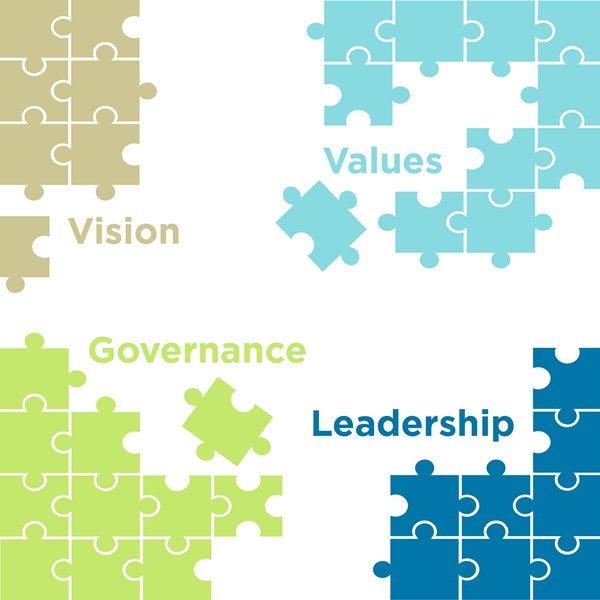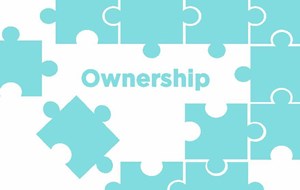alignment noun | ə-ˈlīn-mənt
State of agreement or cooperation among persons, groups, nations and the like with a common cause or view point.
Successful ownership alignment is a continuous process rather than an end or accomplishment in itself. The ever-evolving, complex life cycles of the business, family and individuals cause constant shifts in perspective, goals and interests over time that make true continuous alignment an elusive and dynamic pursuit. Ownership alignment is more like an ongoing cycle of seeking and building consensus, then having it fray and unravel only to rebuild it all over again. If you recognize this precarious and fragile cycle for what it is then you develop a greater appreciation for why it is so important to invest constant effort and time into the processes and structures that help families strengthen their capacity to maintain alignment as they transition through the generations.
Through my work with family businesses across sectors and my own experience as a family business partner, I think about alignment or misalignment amongst the ownership group as being analogous to a puzzle. I see the ideal picture of family enterprise as representing the rewards of ownership where owners derive not only monetary benefits, but also deep emotional satisfaction. This gratification stems from their individual and collective roles within the enterprise — whether as family member, shareholder, employee, executive, director, or some combination — and from strong alignment among the ownership group.
Now imagine that picture is broken up into puzzle pieces. Exactly how each puzzle of the family enterprise can come together to form that ideal picture will vary from family to family. Some families do a much better job than others of “solving” this complex, ever-shifting, real-life puzzle by creating and maintaining alignment, even in highly challenging circumstances. Some struggle with alignment for decades.
So how can your family improve the speed and accuracy of work on the puzzle of ownership alignment? This article answers that question by describing four alignment-critical dimensions of ownership in family enterprise.
Focus on the Four Borders
Consider how most people first approach a table filled with disconnected puzzle pieces. Typically they start with the four border sections to create a solid frame for the picture and then to work within that frame. In the same way, the four border segments of the ownership alignment puzzle are critical for setting the continuity process up for success. They include the following:
- Vision of the family, the family legacy and the family enterprise
- Values by which the family operates on all dimensions of the enterprise
- Leadership at the senior level and throughout the ownership group
- Governance structures, processes and communications to promote better decision-making and relationships

Getting these four framing pieces of ownership alignment right through committed deliberation and action is critical for ownership alignment and its intending benefits. An ownership council can be a forum to discuss and seek alignment around these dimensions, but broader, informal related conversations and action should happen through the family.
Let’s consider each of the four borders in more detail.
1. Vision
A common vision can promote alignment and rally owners to take action to bring it to life. In many cases, family enterprise members focus mainly on their vision for the business: what they want its mission and related strategy to be, now and in the future, as related to potential returns and other metrics such as community impact. That’s certainly important, but vision is also about the family and its legacy.
What do family members want for the family in terms of cohesiveness, relationships and longevity? What kind of legacy do they want to leave through the enterprise?
Asking those questions in the context of vision — whether informally or as part of a more formal visioning exercise — can lead to much greater shared understanding among owners and, ultimately, alignment around priorities and goals moving forward. Owners also feel more emotionally engaged by a compelling vision of family and legacy, further promoting alignment.
2. Values
Values and vision go hand in hand, as the former will always shape the latter.
Shared values also inform owners’ decision-making around the business. This can, of course, happen at the level of mission: What is the business’s main reason for existing? But values can also relate directly to business practices and offerings. For example, members of a family who own a hotel chain may be against offering adult TV content in rooms, based on their values. Similarly, the collective values of family owners of agricultural businesses will inform whether the business uses pesticides or GMOs or how it manages animal husbandry.
Values also guide how the family, especially members working in the business, will interact with employees (treating them like family, for example), and how the business will interact with customers, suppliers, and partners (seeking win-win negotiation terms, for instance).
Again owners need to apply an understanding of their collective values to the family, as well. How will we interact with one another? What do we value most, whether respect, trust, communication, or some combination? Do we wish to promote a feedback-rich culture? If so, how?
Answering value-related questions helps owners uncover a set of shared values and use these for better-aligned understanding and decision-making around what they want the business and family to be.
3. Leadership
Leadership may start at the top, but it permeates every level of the family and organization, significantly influencing alignment among owners.
Whether acting as CEO of the business, board director, ownership council or family council leader, individuals in positional leadership roles set the tone, culture, and actions related to ownership alignment. A leader can and should ask of the broader ownership group: “How important is ownership alignment to us and how can we maximize it?” But personal leadership is also important throughout the family, whether related to a formal role or not.
Strong, consensus-focused leadership at all levels is especially important as the number of shareholders grow, as is the case in the cousins stage of family enterprise, where the number of owners can stretch into the tens or even hundreds. Leaders who evoke stronger alignment among owners and drive related rewards will:
- understand the importance of “familiness”
- see the big picture of where the family and enterprise are heading (for better or worse)
- promote the family’s bedrock values
- skillfully manage conflicts
- inspire people to join in the family’s vision
- bring together diverse perspectives
In contrast, leaders who tend toward autocratic styles will most likely disrupt alignment among owners with broadly negative consequences. This can take the form of nonconsensus-driven decision-making (“My way or the highway”), undermining of others’ influence or authority, or dismissing or quashing alternative opinions or points of view.
4. Governance
The final framing piece for ownership alignment is governance. This provides the structures and system for guidance, communication and decision-making across the family, ownership and management dimensions of the enterprise. Information for decision-making and the outcomes of decisions need to be shared across the enterprise, and governance mechanisms help ensure this happens.
There’s no single formula for how to build a governance system. Families vary widely with regard to governance structures and processes. Some have a full suite of governance bodies, including a business board with independent directors, ownership council, family council, shareholder assembly, philanthropic organization boards, and so on. Others have minimal formal governance features. It depends in part on the size and complexity of the family and business.
But the important thing is to be committed to the principle behind governance: sharing of information and decision-making for collective benefit. When this is the case, owners are much more likely to be aligned around all dimensions of the enterprise: values, vision, mission, culture, ownership goals and others.
In this way, we can see governance as helping to maintain the integrity of the frame for ownership alignment, by keeping the other pieces in place through formal/informal means of communication and relationship-building.
For example, one family has external evaluations of its board and directors as well as its family employees followed by leadership coaching and development sessions. This part of their governance system ensures they have the important conversations about how effective they are being as leaders of their family enterprise and how to strengthen the same.
Commitment and Skills Complete the Picture
While the focus has been on the four primary border dimensions that affect ownership alignment, it is important to mention two additional factors that influence alignment: commitment and skills.
Think of commitment as an invisible string or glue that holds the four framing pieces together. If owners aren’t genuinely committed to increasing alignment and its benefits, the strength of the other factors won’t matter. Things will fall apart in the enterprise and family, whether figuratively or literally.
Skills are also necessary for good alignment among owners. That is, no matter how committed people are to the enterprise, they will need skills to maximize quality and performance on all dimensions by navigating the enterprise successfully and helping others do the same. Skills represent the capability with regard to the four border segments presented here: vision, values, leadership and governance.
Specific skills that help boost the power of those framing pieces include curiosity, authenticity, listening, openness, conflict management, empathy, giving and receiving feedback, patience, forgiveness, the ability to ask good questions, and others that can be thought of broadly as reflecting “emotional intelligence.” Such skills not only reduce anxiety in the enterprise, but enable members to identify and bring out their best for collective benefit.
Putting All the Ownership Pieces Together
The analogy presented suggests that it’s like working on a constantly changing, three-dimensional puzzle with thousands of pieces. But like any skilled puzzle-solver, you can make this challenge easier by focusing first on the framing pieces — vision, values, leadership, and governance — and ensuring strong levels of commitment and skill to support the effort.
In this way, you can continue to craft the ideal picture of your family enterprise, as built on a truly aligned ownership group.

